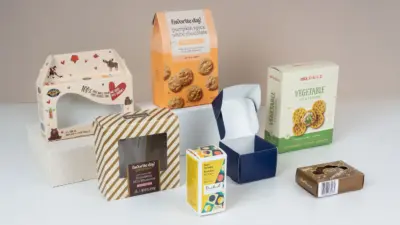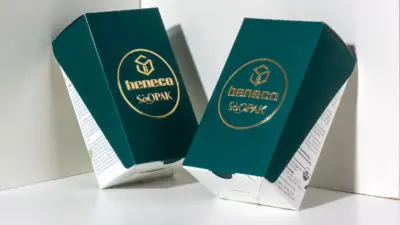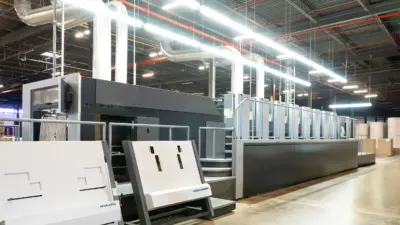“In the future, every company will become an AI company.” – Fei-Fei Li, Professor at Stanford & Co-Director of the Stanford Human-Centered AI Institute.
This couldn’t be truer for product packaging companies today. Some of the biggest players have already deployed AI-enabled robots in their manufacturing facilities.
While some see this as a game-changer, there’s some speculation that AI is replacing jobs in the sector, creating a divergence of interests among those involved (manufacturers and employees). There’s also evidence that AI is helping improve the quality of products, which is a big win for consumers.
AI is still a relatively young technology, and we’re just coming around to understanding its potential and ramifications. So, in this guide, we’ll explore how it is impacting the packaging industry. Only then can we judge it fairly.
Improved Operational Efficiency
Automation has been around for quite some time now, but no system, to date, has done it better than AI. AI-driven automation has the potential to streamline nearly every aspect of the packaging process, right from supply chain optimization and predictive maintenance to inventory management and quality control.
Utilizing AI in the packaging industry is akin to having an employee who never makes mistakes. In just a few years, businesses in the packaging sector have been able to eliminate or at least mitigate some of the most crucial bottlenecks in their operations. The result? Improved operational efficiency and better finished products.
Sustainability and Traceability
As the world wakes up to the dangers of pollution, product packaging manufacturers have emerged with groundbreaking solutions to recycle waste into reusable packaging. In 2021 alone, 63.2% of packaging waste in the UK was recycled, reducing the amount of waste going into landfills and incineration facilities, which contribute heavily to carbon emissions.
One major reason for this shift is the use of AI to optimize packaging, reducing excess material and finding new ways to reuse what was once seen as waste.
Design and Labelling
A new study found that 40% of consumers share an image of your product packaging on social media if they find it unique or branded. Gone are the days when product packaging was solely meant to keep products secure; now, it’s all about aesthetics.
The emergence of generative AI models like ChatGPT-4.0 and Google Gemini has enabled product packaging designers to come up with out-of-the-box design ideas that resonate well with their target market.
AI and machine learning-enabled machines also eliminate product labelling errors, ensuring compliance with regulatory requirements. Smart packaging has also taken a leap forward with packaging designs that can detect changes in temperature, humidity, or pressure and adjust settings to protect the contents of the package.
Job Displacement and Labor Disruption
The automation of repetitive tasks, while it’s good for the most part, reduces the need for manual labor. This means that low-risk workers in packaging industries are at risk of redundancy. The labor unrest has prompted some workers to opt for upskilling programs to maintain their relevance. The ones that can’t keep up are at risk of losing their jobs.
The Bottom Line
AI disruption in the packaging sector is inevitable. It is a brewing storm that will only get bigger as players in the sector continue to adopt and innovate with the technology. While some may worry about potential job disruptions, AI’s potential to revolutionize the sector will bring more benefits for both employers and employees. Eventually, the packaging industry will morph into a hybrid sector, utilizing both human and AI resources to achieve set goals. ducts and respecting the planet.
Elevate Your Brand Packaging
Craft packaging that makes your products shine
Get started today!



